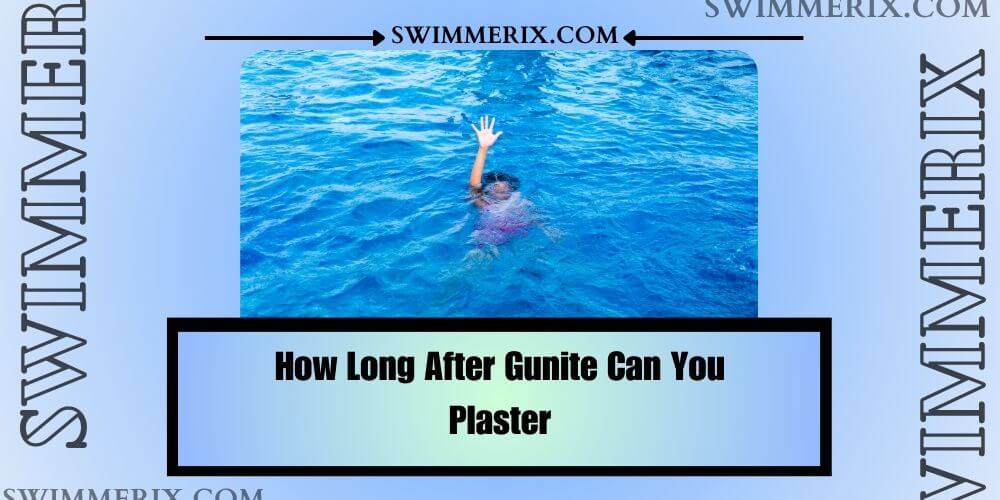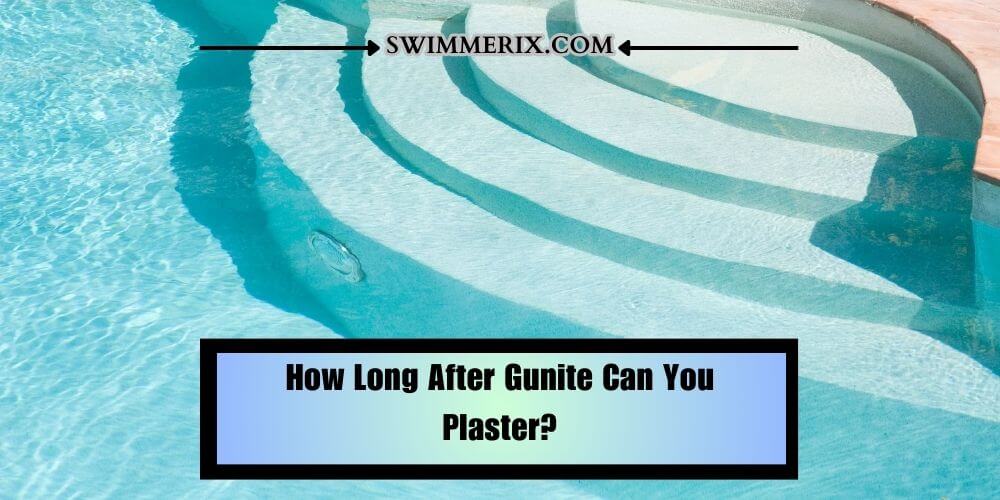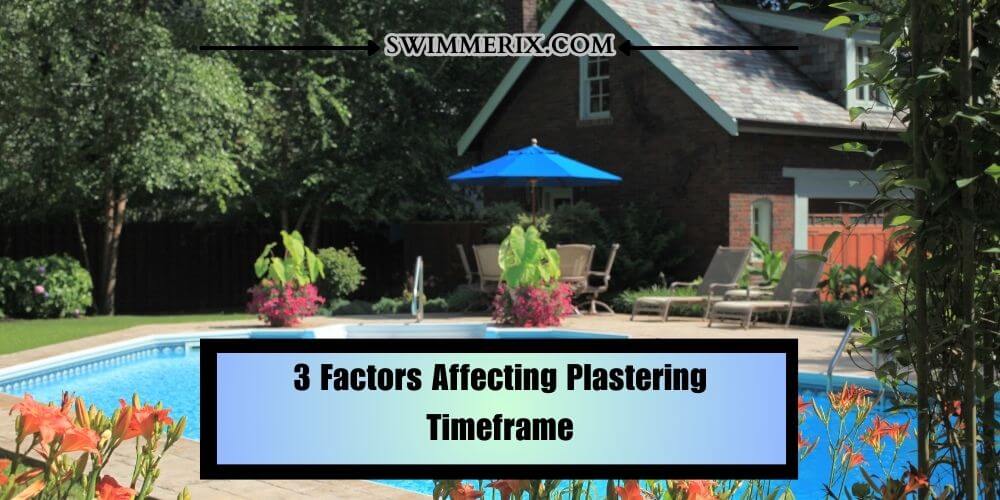
If you are involved in building a swimming pool or structure using gunite & plastering, you might wonder, ‘How long after gunite can you plaster.’ If this is the case, you are in the right article. In this article, I will help you learn the perfect time for plastering after gunite application and give valuable insights into this process.
Further, I will help you discover the factors affecting the plastering timeframe and signs of readiness for plastering. But before all these things, let’s begin with learning ‘how long after gunite can you plaster.’
How Long After Gunite Can You Plaster?

Based on various studies, including one by the Emerald Custom Pools, the recommended waiting time ranges from 7 to 28 days before plastering. However, the actual time can be affected by factors like climate, gunite mix composition, and the size & complexity of the project.
Attention to the waiting period is important because it allows the gunite to cure properly, further ensuring a strong bond between the gunite & plaster layers. But don’t feel confused because finding the ideal time is not a mystery; it can be determined if you consider the factors properly.
I highly recommend you first take a moment to grasp the essentials of gunite & plastering. Gunite is a mix of cement, sand, & water, often applied pneumatically to create a strong & durable structural base.
A study by the American concrete institute found that gunite offers numerous advantages over traditional concrete, such as enhanced tensile strength and better resistance to water penetration.
On the other hand, if you look at the plastering, it is a finishing touch that offers your pool & its structure a smooth appearance and enhances its longevity.
There are many different types of plasters that you can use, including white cement-based, marble based, as well as quartz-based, with each coming with unique attributes & aesthetic appeals.
Below I have mentioned the recommended waiting times depending on the climatic condition to plaster your pool structure or floor after applying gunite.
| Climate Conditions | Optimal Waiting Time (in days) |
| Hot and Dry | 7-14 |
| Moderate Temperatures | 14-21 |
| Cold and Humid | 21-28 |
Also Read: How Soon Can You Swim After Plastering Your Pool
Signs of Readiness for Plastering
When waiting for the gunite to cure, I will advise you to watch out for the visual indicators that often signify the readiness for plastering.
While doing my research, I learned about the professionals at the National Pool Tile recommending performing the thumbprint test before plastering.
Hence, it would be best never to hesitate to press your thumb on the gunite surface to find readiness before applying plastering. When you press your thumb, and it only leaves a light indentation, it is likely ready for plastering.
In addition to this, make sure that you first clean the surface properly and ensure it is free of any debris or contamination before plastering for effective results.
3 Factors Affecting Plastering Timeframe

Several factors come into play when determining the exact timing for plastering after gunite application. Let’s take a closer look at these influential elements.
Climate & Weather Impact
One of the major factors that can affect the timing of plastering after the gunite process is climate & weather impact. Climate can have a significant impact on the curing process of gunite.
According to research by the American Shotcrete Association, extreme weather conditions may either expedite or delay the curing process of gunite, affecting the overall curing time. If the climate is very hot or dry, the gunite will likely cure faster while reducing the waiting period.
On the other hand, gunite may extend its curing time if the climate is very cold or humid. Below I have mentioned the effect of climate on gunite and plaster to help you understand better & adopting the right approach at the right time.
| Climate Conditions | Curing Time |
| Hot and Dry | Faster Curing |
| Moderate Temperatures | Average Curing |
| Cold and Humid | Slower Curing |
Gunite Mix Composition
Another thing you need to consider before applying plastering is the composition of gunite, which significantly impacts the curing time.
I learned about many studies, but one conducted by the concrete construction magazine suggested that we should use additives and accelerators in the gunite, which can expedite the curing process, allowing for easier & earlier plastering.
Using the standard gunite mixes with no additives will take much curing time compared to a gunite mix with accelerators or additives.
Project Size & Complexity
Another thing that you need to consider is the project size & complexity. The size & complexity of your pool construction project is also a key determinant of the plastering schedule.
Depending on the size of your project, the larger or more intricate pool will require a longer curing process period for the gunite to ensure its structural integrity.
Ensuring Successful Plastering
Once you have patiently waited for the gunite to cure, you will also want to ensure a successful plastic process that can help you achieve a stunning and long-lasting finish. If this is the case, below I am giving you some essential tips to help you go through and achieve a perfect plastering job.
Importance of Expert Consultation & Inspection
Before you start plastering, I will highly advise you to consult and get a professional inspection of the gunite surface thoroughly. Their trained eyes are best at determining whether the gunite is ready for plastering. It would be best if you never hesitated to hire an experienced contractor to help you prevent potential issues down the light, saving both time & money.
Proper Plastering Techniques & Materials
Once you have determined whether you can start plastering, you must use the right technique & material for a successful plastering job. According to the National plastering council, you must use a high-quality plaster mix and follow proper application methods to achieve a smoother & more durable finish.
Always remember to consider the type of plaster you are using and its compatibility with the gunite composition/substrate to achieve the best or desired result. Below, I’ve mentioned some plastering techniques along with the key considerations to consider.
| Plastering Technique | Key Consideration |
| Application by Skilled Professionals | Smooth and Even Finish |
| Quality Plaster Mix | Enhanced Durability |
| Compatibility with Gunite Substrate | Strong Adhesion |
Curing & Maintenance
Once the plastering job is properly completed, its curing process is equally important for the longevity of your pool and its structure. A study conducted by the national pool industrial Research Centre suggests that proper curing, including keeping the plaster surface moist, will further help you reduce the risk of cracking and ensure the plaster’s strength & beauty. Below I have mentioned the type of plaster you can use, along with its durability rating, to help you make an informed decision.
| Plaster Type | Durability Rating (1 to 10) |
| Quartz-Based Plaster | 9 |
| Marble-Based Plaster | 7 |
| White Cement-Based Plaster | 6 |
Conclusion
Congratulations because now you know how long after gunite you can plaster. If you have any other concerns regarding how long after gunite you can plaster, never mind, comment below.
You should note that the optimal time for plastering after the gunite application may vary depending on the project size, gunite mix composition, and climate & weather conditions. Remember that all these will play a huge role in determining the waiting period.
However, by following expert advice and employing the right plastering techniques, you can achieve a beautifully finished pool or structure that stands the test of time. I hope I have given you all the information you need on how long after gunite you can plaster.
If you find this article helpful, then consider sharing it. Your share will help many people learn about the factor that may affect the timing of plastering after gunite curing. Check my other helpful guide on pool care & maintenance shared on this website. See you in the next post, till then take care & goodbye.

